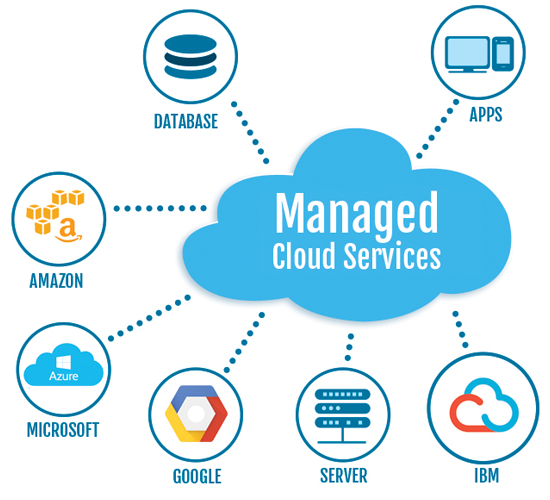LinkDaddy Cloud Services Decoded: Insider Insights right into Universal Cloud Service Advancements
LinkDaddy Cloud Services Decoded: Insider Insights right into Universal Cloud Service Advancements
Blog Article
Simplify Your Facilities With Cloud Provider
As organizations navigate the ever-evolving landscape of technology and information administration, the role of cloud solutions in simplifying infrastructure has actually come to be progressively noticeable. How can companies properly browse this transition and genuinely open the possibility of cloud services for simplifying their facilities?
Advantages of Cloud Provider
Cloud solutions offer a streamlined approach to managing IT framework, giving businesses with cost-efficiency, adaptability, and scalability. One of the key advantages of cloud services is the scalability they supply.
In addition, cloud services eliminate the need for organizations to invest in costly software and hardware. This cost-efficiency is a significant benefit, specifically for little to medium-sized business wanting to reduce ahead of time costs. By utilizing cloud services, businesses can access high-grade IT sources without the large cost connected with conventional infrastructure configurations.
Moreover, cloud solutions provide services with the adaptability to access their information and applications from anywhere with an internet connection. This degree of access enhances cooperation among groups, allows remote work, and enhances general performance. The adaptability offered by cloud solutions equips organizations to adapt rapidly to changing market conditions and consumer needs.
Price Savings and Scalability
In enhancement to the functional benefits highlighted previously, the assimilation of cloud solutions right into a firm's facilities comes up with considerable cost savings and improved scalability. Cloud solutions supply a pay-as-you-go model, permitting services to scale resources up or down based upon current requirements, therefore staying clear of the costs linked with keeping excess ability. This adaptability makes it possible for firms to adapt quickly to rising and fall demands without incurring unneeded expenses.
Furthermore, cloud solutions eliminate the need for upfront financial investments in software and hardware, lowering resources expenses. Operating budget are also lessened as companies no more need to manage and preserve physical web servers, resulting in lower energy consumption and IT staffing prices. Furthermore, cloud solutions give automated updates and maintenance, making certain that the framework stays safe and current without requiring manual interventions.
Enhanced Protection Steps
Executing stringent safety and security steps is critical when integrating cloud services right into a company's framework to protect delicate data and make sure compliance with industry guidelines. Cloud company provide improved protection attributes such as information security, firewall software security, and multi-factor authentication to mitigate cybersecurity risks. Security helps shield information both at remainder and in transportation, making certain that only authorized users can access sensitive details. Firewall softwares serve as an obstacle between interior networks and external threats, monitoring and regulating incoming and outgoing network web traffic. Multi-factor verification adds an extra layer of security by requiring users to supply several types of confirmation prior to accessing the cloud services.
Furthermore, normal safety and security audits and conformity assessments help ensure and recognize vulnerabilities adherence to industry criteria. Firms can also take advantage of attributes like automatic security updates and real-time risk tracking supplied by cloud provider. By focusing on protection procedures and remaining aggressive in resolving potential threats, services can with confidence leverage cloud solutions while protecting their valuable information from unauthorized gain access to or breaches.
Transitioning to Cloud Infrastructure
To successfully integrate cloud services into a business's facilities, an organized approach that resolves the shift towards cloud-based remedies is imperative. Transitioning to cloud infrastructure involves careful preparation and implementation to guarantee a smooth migration process - linkdaddy cloud services.
As soon as the evaluation is complete, a migration approach ought to be established. This approach ought to outline the timeline, sources, and duties for moving each part he said to the cloud. It is necessary to connect this plan plainly to all stakeholders to make certain positioning and lessen disturbances during the transition.
During the migration screening, tracking and process are important to identify and resolve any issues immediately. Normal checkpoints should be established to track progress and make essential changes. Furthermore, training for employees on utilizing cloud solutions need to be offered to guarantee a successful shift and optimize the benefits of the brand-new framework.
Ideal Practices for Cloud Fostering
Successful fostering of cloud solutions depends upon the calculated placement of business purposes with technological capacities and business readiness. To guarantee a smooth change to the cloud, companies need to begin by conducting a detailed evaluation of their present infrastructure and identifying which work are best fit for cloud migration. It is essential to include key stakeholders from different departments in the decision-making process to get buy-in and address any kind of issues early on.
Another best technique for cloud fostering is to prioritize protection and conformity. Organizations has to very carefully assess the safety procedures used by cloud company and guarantee that their information is secured according to industry standards and regulatory requirements. Carrying out durable data file encryption, gain access to controls, and regular safety and security audits can assist reduce risks associated with cloud fostering.

Conclusion

As organizations browse the ever-evolving landscape of technology and data administration, the function of cloud services in streamlining framework has ended up being significantly noticeable - universal cloud Service. Exactly how can businesses successfully navigate this shift and really unlock the possibility of visit this site right here cloud services for streamlining their infrastructure?
Cloud services use a streamlined approach to managing IT infrastructure, supplying businesses with cost-efficiency, versatility, and scalability. By utilizing cloud services, organizations can access high-grade IT resources without the substantial rate tag connected with traditional infrastructure setups.
To ensure a smooth transition to the cloud, organizations should start by conducting an extensive evaluation of their existing infrastructure and determining which work are best fit for cloud migration.
Report this page